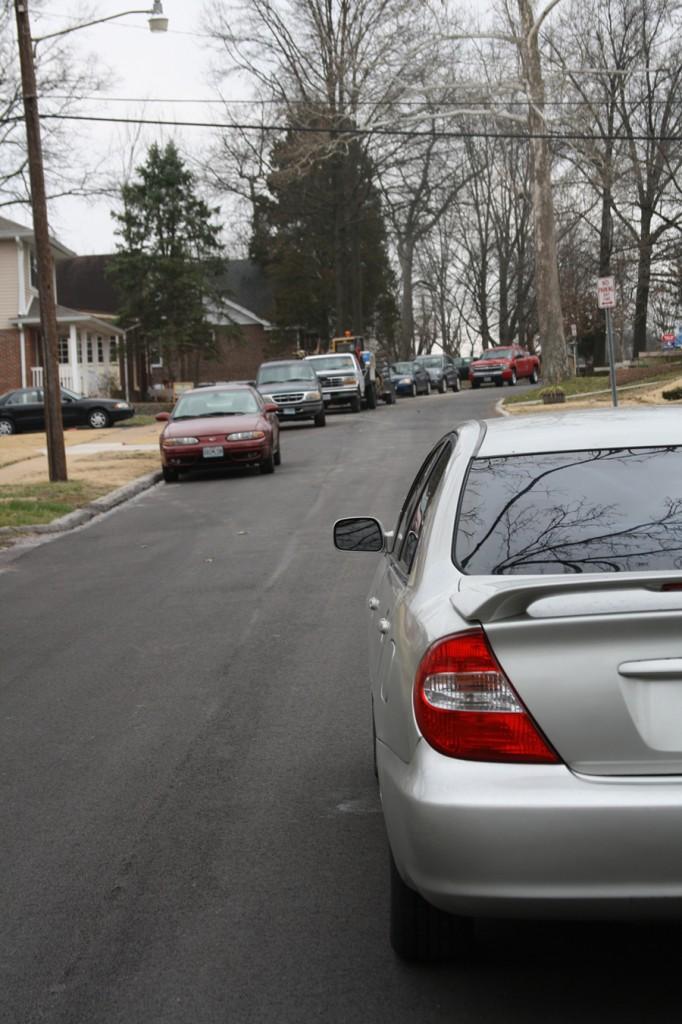Andy Lewis was driving home from a friend’s house on a cold January night. He was not far from his house when he braked at a four-way stop sign, glanced right and left and advanced through the intersection. Lewis did not see the large black truck that hurdled out of the darkness toward his vehicle. Lewis’ car slammed into a metal pole after he swerved to avoid the speeding truck.
“Right when it happened, I was shocked,” Lewis, sophomore, said. “I was stunned, and it wasn’t until the next day that I felt really bad for ruining the car.”
Although Lewis did not suffer any major injuries, the number of 16-17 year-old driver deaths in passenger vehicles across the country has increased, according to a report by the Governors Highway Safety Association (GHSA), an organization that represents states on highway safety issues.
The report compared the amount of teenage traffic fatalities in the first six months of 2010 to the number of accidents during the first six months of 2011 and concluded the number of deaths increased by 11 percent. However, the report also states the total motor vehicle deaths for the first six months of 2011 declined .9 percent.
“While it is good news that overall deaths appear to have declined, we are concerned that the trend with teens is going in the opposite direction,” Troy Costales, GHSA chairman, said.
According to the report, 23 states saw increases, 19 had decreases and there was no change in eight states and the District of Columbia.
Among the states that observed increases in teenage traffic fatalities, Missouri was among the highest with a spike of 11 percent. Three deaths were reported in Missouri during the first half of 2010, compared to 10 deaths reported in the first half of 2011.
Chad Walton, school resource officer, worked patrol from 1999-2008, and he responded to a number of road accidents. During that time, Walton noticed young drivers were among the groups involved in the most traffic catastrophes.
“The biggest issue among teen drivers is inattention,” Walton said. “Even back in the days before cell phones, kids would look around, talk to friends and do things other than keeping their eyes on the road.”
While inattention such as cell phone use contributes to teenage traffic fatalities, the report also highlights other factors that drive up state and national statistics. According to the report, one potential explanation for the increase is the benefit of state graduated driver licensing (GDL) laws leveling off.
During the 1990s, many states began enacting GDL laws that allow young drivers to safely gain experience behind the wheel before obtaining full driving privileges. In Missouri for example, drivers younger than 18 can only have one passenger in their vehicles during their first six months of driving and they are not allowed on the road from 1-5 a.m. According to the report, however, these laws are becoming more lenient.
“A widespread strengthening of laws is still possible,” Costales said. “Finding effective tools outside of GDL is an important goal, too. These include improving driver education and involving parents in proactively establishing safe driving habits for their teens.”
As the parent of a young driver and a soon-to-be-driver, Costales said parents must uphold strict driving standards for their teenagers.
“I know firsthand the pressures parents face in allowing their teens behind the wheel,” Costales said. “As parents, we must set and enforce strict rules for our new drivers, making sure risks are minimized. This includes limiting other teens in the car, limiting nighttime driving and absolutely prohibiting any type of cell phone or electronic device use while driving.”
According to the report, the improving economy also makes it easier for more teenagers to drive. As a result, more fatalities and accidents occur. However, despite the conditions and influences increasing the number of traffic accidents, Walton believes safety behind the wheel is possible if drivers consistently exercise caution.
“Everyone needs to pay attention and focus on the road,” Walton said. “You have to pretend that at any minute something could jump out in front of you.”









